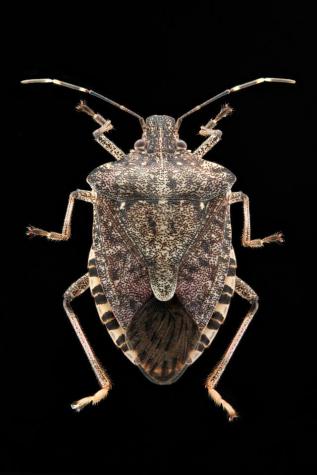COLUMBIA, Mo. – Brown marmorated stink bugs are hunting homes for the winter.
The agriculture pests are a nasty nuisance indoors, but are otherwise harmless to pets and humans, say University of Missouri Extension entomologist Richard Houseman and Lincoln University Cooperative Extension integrated pest management specialist Jaime Pinero. They do not bite, sting, suck blood or spread disease.
But they stink and want to hibernate in your warm quarters this winter. When spring comes, they will go outside to feed off agricultural crops.
An ounce of prevention is the best medicine for keeping stink bugs and other insect pests such as the multicolored Asian lady beetle at bay. Put screens over windows, doors and vents. Caulk cracks in windows and door frames. Take special care when removing window air conditioner units.
Insecticide foggers will not kill stink bugs inside, says Houseman. Remove live and dead stink bugs from indoor areas with a vacuum cleaner. Your cleaner may take on an odor from bugs letting off their smell when disturbed.
Virginia Tech researchers found that bugs could be trapped by filling a foil roasting pan with water and a few drops of dish soap. Point a light into the pan and place the pan in an area where the bug is present. The light attracts bugs, which will fall into the soapy water and drown. (Watch a video demonstration.)
Since 2013, the brown marmorated stink bug has spread throughout the state. Missouri is the 42nd state to report the bug. It appears most commonly in the eastern and southern parts of the state, especially urban St. Louis.
It is about 5/8 inch long and marbled brown. Its antennae have two white bands and its legs are marbled brown with faint white bands. The membranous parts of its forewings have dark bands at the tip. There is a banded abdominal edge to the side of its wings.
The bug damages fruit, vegetable and ornamental crops. It also harms soybean and corn.
Go to Missouri Pest Monitoring Network - Brown Marmorated Stink Bug for more information, or visit Management of brown marmorated stink bug in US specialty crops to report sightings.
